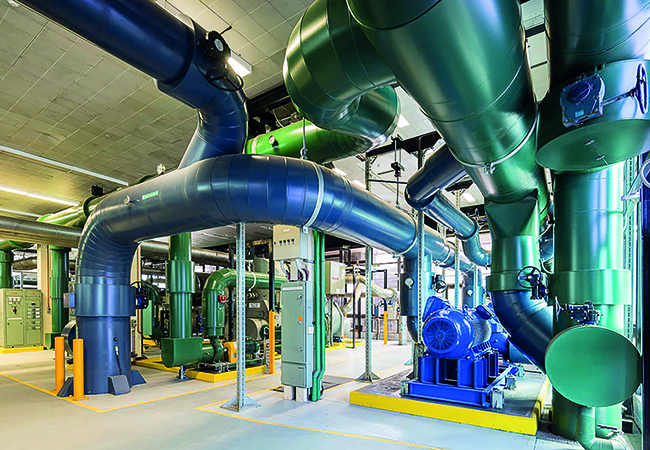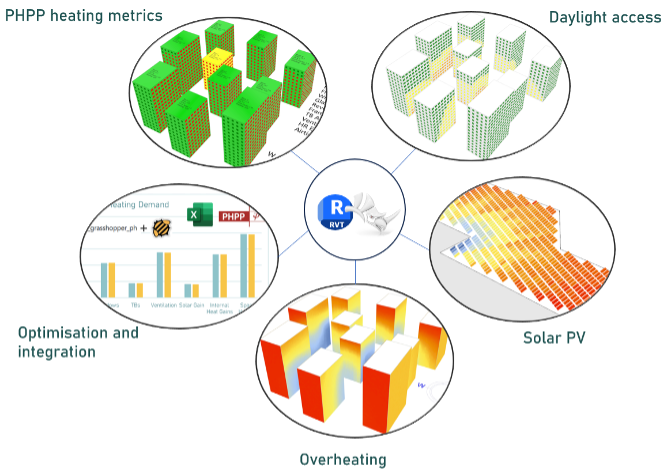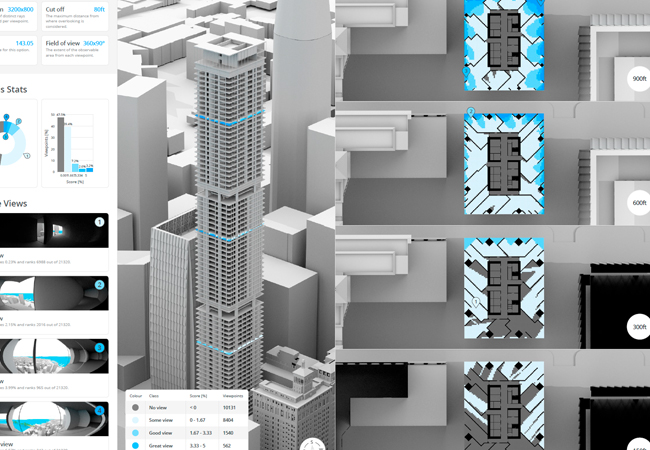
A cutting-edge digital optimisation project at Sydney Airport’s Terminal 1 has not only resulted in a 33% boost to chilled water plant efficiency, but also recognition at the 2025 CIBSE Building Performance Awards (BPAs).
The project was led by A.G. Coombs Group, Australia’s leading provider of specialist building services, and Exergenics, an Australian company that offers a cloud-based machine-learning platform to optimise the efficiency of chilled‑water HVAC plants in commercial buildings. They teamed up with Sydney Airport to look at how existing chiller plant could be operated more efficiently without costly hardware upgrades or disruption to daily airport operations.
Their application of an optimisation engine based on an Exergenics patent leveraged operational data to recommend optimal control strategies that yielded significant energy savings. It also won the prize for Best Digital Innovation – Project Delivery at this year’s BPAs. (See panel, ‘The optimisation patent’). The awards entry stood out as an example of how advanced data analytics and machine learning (ML) can transform legacy systems in ways that were unthinkable a few years ago.
The Terminal 1 chilled water plant is a critical asset for Sydney Airport, providing precise temperature control to keep millions of international passengers comfortable in a busy, energy-intensive environment (see panel, ‘Inside the plantroom’).
The optimisation project’s objective was to enhance energy efficiency and reduce greenhouse gas emissions without significant capital expenditure or disruption to airport operations. Rather than relying on conventional tuning methods based on manufacturer data, the team used the airport’s existing building management system (BMS) to gather detailed operational data.
There were four main phases to the project: data collection and baselining; model training and optimisation; strategy implementation and remote witnessing; and measurement and verification. ML tools were used to determine the operational efficiency profiles of chillers, pumps and cooling towers, which change over time with wear and tear. An ML engine analysed the historical temperature, pressure, energy and flow data from the existing BMS to model and simulate plant equipment performance and system dynamics under a range of conditions.
As a result, the accuracy of the final control logic that was implemented on site using this approach is optimal for how the equipment performs in the field, rather than how it was designed to perform.
Once the modelling was completed, the software generated an updated functional description and scope of works for the existing controls team to implement on site. This provides a detailed explanation of how the BMS should operate to achieve specific control strategies or performance outcomes, without the need for new hardware.
The optimisation determined the set points and control parameters to achieve the highest possible efficiency from the chilled water system.
The energy savings were achieved through the implementation of the following optimised controls:
- Secondary pump staging and flow reset
- Update to chiller sequencing strategy
- Update to chiller stage up and down demand setpoints
- Implementation of a stage-based dynamic condenser water temperature reset algorithm.
The final step involved updating the plant’s functional description and scope of works so that the changes could be implemented on site with minimal disruption. Throughout the year-long implementation, energy savings were rigorously verified under the International Performance Measurement and Verification Protocol, providing transparent, credible evidence of the results.
Key challenges included integrating the optimisation into the existing BMS and minimising operational impact. These were overcome using a software-only approach. The project team worked closely with Sydney Airport’s facilities management to ensure smooth implementation and ongoing performance monitoring.
In this high-security environment, the absence of additional hardware was essential. The optimisation engine ran in the cloud, using secure, air-gapped data transfer for rapid deployment and robust cybersecurity without disrupting operations.
The results
In the first nine months of operation, the chilled water plant at Sydney Airport’s Terminal 1 reduced energy consumption by more than 890,000kWh, cutting greenhouse gas emissions by 704 tonnes of CO₂ and saving more than $AUD 124,000 (£59,000) in energy costs.
The overall annual reduction in energy consumption was1.74GWh, 1,377 tonnes of CO₂ avoided, and nearly a quarter of a million $AUD in reduced energy spend. The project delivered full payback in 12 months, half the time originally projected.
The optimisation improved system performance significantly. Optimal secondary chilled water flow increased from 32.3% to 93.9% of operational hours, while optimal supply water temperature rose from 19.1% to 91.0% of operational hours. Secondary chilled water pump energy use dropped by 75%. These outcomes reflect better control over conditions that previously led to inefficiencies, such as excessive or insufficient flow and incorrect pump staging.
The methodology can be adapted for other facilities that rely on chilled water plants – from airports to hospitals, shopping centres and commercial towers. By leveraging data that buildings already collect through their BMS, operators can uncover hidden inefficiencies and correct them using software-based control improvements, rather than expensive capital upgrades.
The project will be shared – in the form of a case study and optimisation readiness/implementation guide – with stakeholders throughout the building services industry.
The CIBSE BPA judges not only praised the project’s technical execution, but also its practical impact. With so many organisations under pressure to cut carbon and reduce operating costs, this project demonstrates how digital innovation can deliver immediate, measurable improvements while extending the life and value of existing systems.
Entry to the 2026 CIBSE BPAs is open until 5 September: www.cibse.org/bpa


